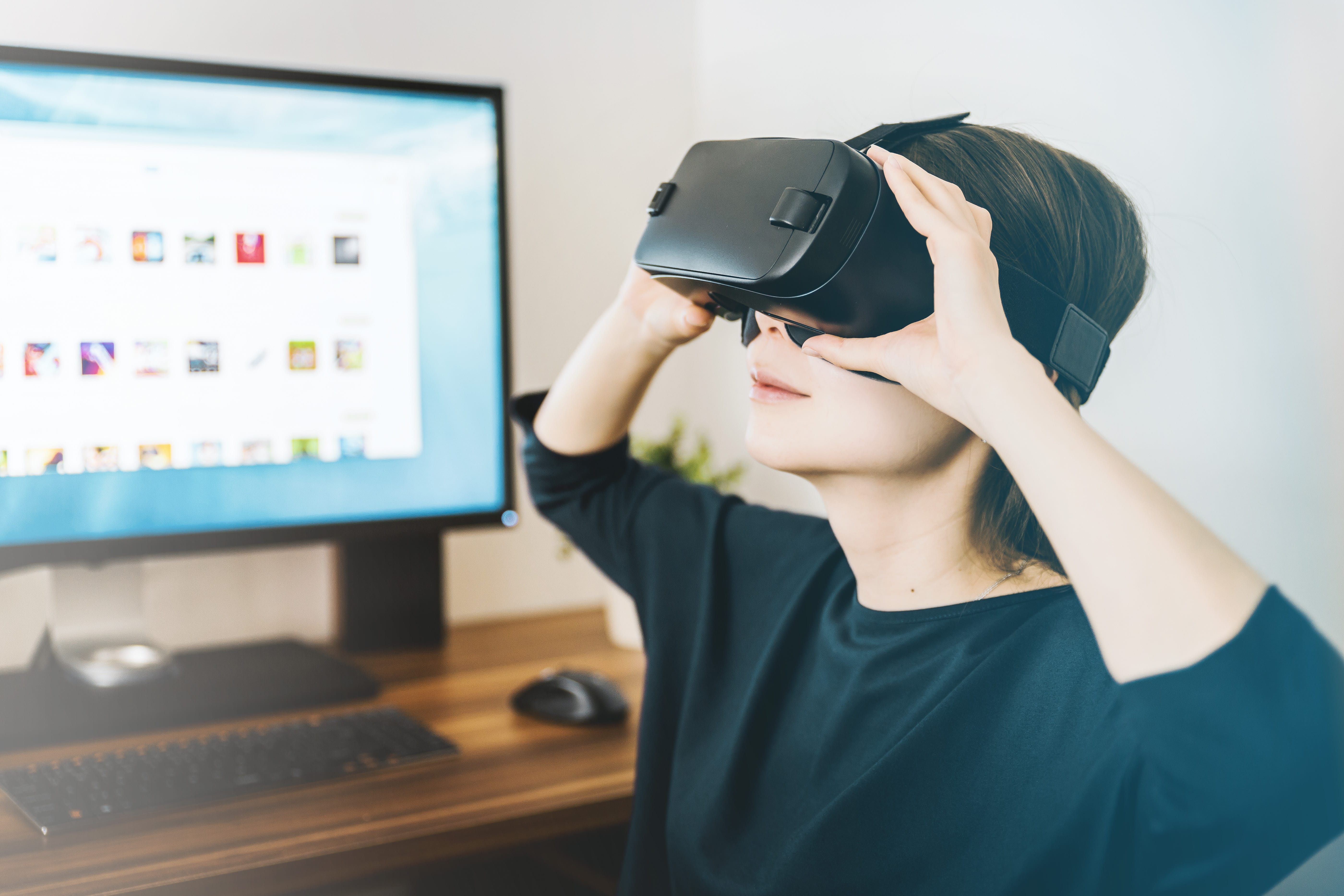By Maddie Jostol, Marketing Manager
 Virtual reality, augmented reality, 3D imaging, mixed reality – overwhelmed yet? These flourishing technologies are just getting started. Yes, even imagery and video are getting more advanced. If you think these things aren’t going to start seeping into your role as a real estate agent, think again. They already have. Don’t worry though – in many cases, they’re actually helping agents deliver a higher level of service to home buyers. The way we show spaces is no longer limited to open houses and still images – there’s a whole array of options for experiencing a space even when you aren’t physically in it.
Virtual reality, augmented reality, 3D imaging, mixed reality – overwhelmed yet? These flourishing technologies are just getting started. Yes, even imagery and video are getting more advanced. If you think these things aren’t going to start seeping into your role as a real estate agent, think again. They already have. Don’t worry though – in many cases, they’re actually helping agents deliver a higher level of service to home buyers. The way we show spaces is no longer limited to open houses and still images – there’s a whole array of options for experiencing a space even when you aren’t physically in it.
First, let’s define VR and AR since they’re buzzwords that might be unclear.
Virtual Reality (VR)
Virtual reality is the more immersive experience, as a computer-generated simulation of a realistic situation. VR typically requires a headset display – yes, those big, futuristic-looking goggles. It immerses the user in an entirely new environment, so it is often used for gaming, entertainment, and training. Think: flight simulators.
Augmented Reality (AR)
Augmented reality does not close people off to their surroundings like VR does. In fact, it simply augments the user’s current surroundings, enhancing or changing aspects of reality. It adds new layers of content to reality in order to enhance a person’s experience. Think: Pokémon Go.
So, how are these tech advances working their way into the world of real estate? Here are a few ways.
Virtual Walk-Throughs
Create a virtual tour to show off a property. Rather than a prospective buyer having to drive out to the property and view it in person, a video walk-thorough can serve as an effective introduction to the property so they can decide if they’d like to take the next step. Services such as Matterport enable agents to construct 3D walk-throughs of a listing. Basically, it models the space so the viewer can experience the space just like they would in reality. 3D imaging offers a true experience, giving a potential buyer a true feeling for how the space is situated and laid out.
Tip: even if you don’t have a high-tech tool to accomplish a 3D walk-through, you can still add a video walk-through to your listing presentations. It lends a personal touch and enables the prospective buyer to truly experience the home and picture their own life taking place there. With the incredible quality of smartphone cameras now, you can accomplish this without investing in expensive video equipment.
Virtual Staging
Virtual staging is a rising trend in real estate – it means augmenting images of the home to enhance or update the  space. PadStyler, for example, specializes in virtual home staging and makes it especially simple for agents. Agents pay a flat fee for an image, and PadStyler does all the heavy lifting. A virtual staging service such as this is particularly important for properties that are outdated or have an undesirable curb appeal. Buyers are often quick to overlook properties that lack polish, and this is an easy way to help them visualize the property’s potential.
space. PadStyler, for example, specializes in virtual home staging and makes it especially simple for agents. Agents pay a flat fee for an image, and PadStyler does all the heavy lifting. A virtual staging service such as this is particularly important for properties that are outdated or have an undesirable curb appeal. Buyers are often quick to overlook properties that lack polish, and this is an easy way to help them visualize the property’s potential.
New Construction
Virtual reality is increasingly commonly being used for new construction. Companies such as Virtual Xperience and VR Global are using VR to bring properties to life before they’re built. Instead of making a decision purely based on plans and 2D mock-ups, prospective buyers are able to put on a VR headset and explore the home as if they were in it.
Whether or not you have access to these technologies, consider the trends and how you can improve your service to meet client expectations. The key here is to help buyers visualize their lives in a space, no matter where they are or what the current state of the home is. Put the property’s best foot forward and enable your clients to experience the home in its best light.


 Facebook
Facebook
 X
X
 Pinterest
Pinterest
 Copy Link
Copy Link
